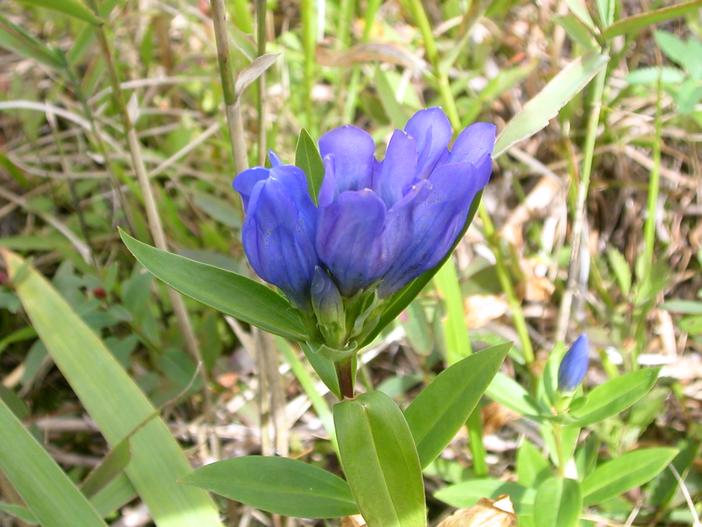Makino’s Gentian
(Gentiana makinoi)
Makino’s Gentian (Gentiana makinoi)
/
/

Anonymous Powered
CC BY-SA 3.0
Image By:
Anonymous Powered
Recorded By:
Copyright:
CC BY-SA 3.0
Copyright Notice:
Photo by: Anonymous Powered | License Type: CC BY-SA 3.0 | License URL: http://creativecommons.org/licenses/by-sa/3.0/ | Uploader: Anonymous Powered | Publisher: Wikipedia Commons

















Estimated Native Range
Summary
Gentiana makinoi, commonly known as Makino’s gentian, is a perennial herb native to the mountainous regions of Japan, where it thrives in subalpine meadows and along stream banks. It typically grows up to 60 cm tall and features lanceolate leaves with a glossy green appearance. The plant is renowned for its vivid blue, bell-shaped flowers that bloom in late summer to early fall, providing a striking display of color when many other plants are beginning to fade. The flowers are particularly showy, with their intense blue hue standing out in garden settings.
Makino’s gentian is valued for its ornamental flowers and is often used in woodland gardens, rock gardens, and borders to add late-season color. It is also suitable for planting in wildflower meadows where its naturalistic appearance can be appreciated. This species requires moist, well-drained soils rich in organic matter and prefers partial shade, though it can tolerate full sun in cooler climates. While generally low-maintenance, it benefits from consistent moisture and protection from harsh afternoon sun. Makino’s gentian is not commonly affected by diseases or pests, but it can suffer from root rot if planted in poorly drained soils. It is not known to be invasive and does not typically present problems with aggressive roots or spreading.CC BY-SA 4.0
Makino’s gentian is valued for its ornamental flowers and is often used in woodland gardens, rock gardens, and borders to add late-season color. It is also suitable for planting in wildflower meadows where its naturalistic appearance can be appreciated. This species requires moist, well-drained soils rich in organic matter and prefers partial shade, though it can tolerate full sun in cooler climates. While generally low-maintenance, it benefits from consistent moisture and protection from harsh afternoon sun. Makino’s gentian is not commonly affected by diseases or pests, but it can suffer from root rot if planted in poorly drained soils. It is not known to be invasive and does not typically present problems with aggressive roots or spreading.CC BY-SA 4.0
Plant Description
- Plant Type: Herb
- Height: 1.5-2 feet
- Width: 0.5-1 feet
- Growth Rate: Slow
- Flower Color: Blue
- Flowering Season: Fall
- Leaf Retention: Deciduous
Growth Requirements
- Sun: Full Sun, Part Shade
- Water: Medium
- Drainage: Medium, Fast
Common Uses
Border Plant, Low Maintenance, Potted Plant, Rock Garden
Natural Habitat
Subalpine meadows and stream banks in mountainous regions of Japan
Other Names
Common Names: Japanese Gentian
Scientific Names: , Gentiana makinoi, Dasystephana makinoi, Gentiana makinoi f. albiflora, Gentiana makinoi f. albiflora, Gentiana makinoi f. stenophylla,
GBIF Accepted Name: